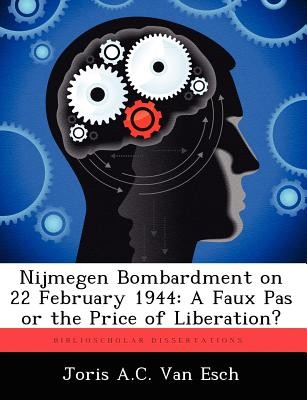
- We will send in 10–14 business days.
- Author: Joris A C Van Esch
- Publisher: BiblioScholar
- ISBN-10: 1249283523
- ISBN-13: 9781249283522
- Format: 18.9 x 24.6 x 0.7 cm, softcover
- Language: English
- SAVE -10% with code: EXTRA
Reviews
Description
A steadfast misbelief in precision bombing evolved into the leading concept for US Army Air Force during the Second World War. This concept envisioned the destruction of the German industrial and economic system as the swiftest path to victory. However, the belief in survivability of bombers through self defense proved incorrect, and the Allies realized that the Luftwaffe had to be defeated first, by attacking the German aircraft industry. On 22 February 1944, Eighth Air Force conducted a mission as part of this offensive. During this mission, the bombers were recalled because of severe weather. On the return trip, the airmen decided not to abandon the mission outright, but to attack targets of opportunity. Because of navigational errors a section of 446 Bombardment Group misidentified the Dutch city Nijmegen as in Germany, and bombed it. Due to aiming errors, the greater part of the bombs missed the designated marshalling yards by a kilometer, and hit the city center instead. The bombardment caused chaos on the ground. It surprised the citizens, ignorant by earlier faulty alarms, and damage caused great difficulties for the provision of aid relief. As a result, the bombardment killed about 800 citizens and destroyed the historic city center.
EXTRA 10 % discount with code: EXTRA
The promotion ends in 19d.02:16:40
The discount code is valid when purchasing from 10 €. Discounts do not stack.
- Author: Joris A C Van Esch
- Publisher: BiblioScholar
- ISBN-10: 1249283523
- ISBN-13: 9781249283522
- Format: 18.9 x 24.6 x 0.7 cm, softcover
- Language: English English
A steadfast misbelief in precision bombing evolved into the leading concept for US Army Air Force during the Second World War. This concept envisioned the destruction of the German industrial and economic system as the swiftest path to victory. However, the belief in survivability of bombers through self defense proved incorrect, and the Allies realized that the Luftwaffe had to be defeated first, by attacking the German aircraft industry. On 22 February 1944, Eighth Air Force conducted a mission as part of this offensive. During this mission, the bombers were recalled because of severe weather. On the return trip, the airmen decided not to abandon the mission outright, but to attack targets of opportunity. Because of navigational errors a section of 446 Bombardment Group misidentified the Dutch city Nijmegen as in Germany, and bombed it. Due to aiming errors, the greater part of the bombs missed the designated marshalling yards by a kilometer, and hit the city center instead. The bombardment caused chaos on the ground. It surprised the citizens, ignorant by earlier faulty alarms, and damage caused great difficulties for the provision of aid relief. As a result, the bombardment killed about 800 citizens and destroyed the historic city center.


Reviews